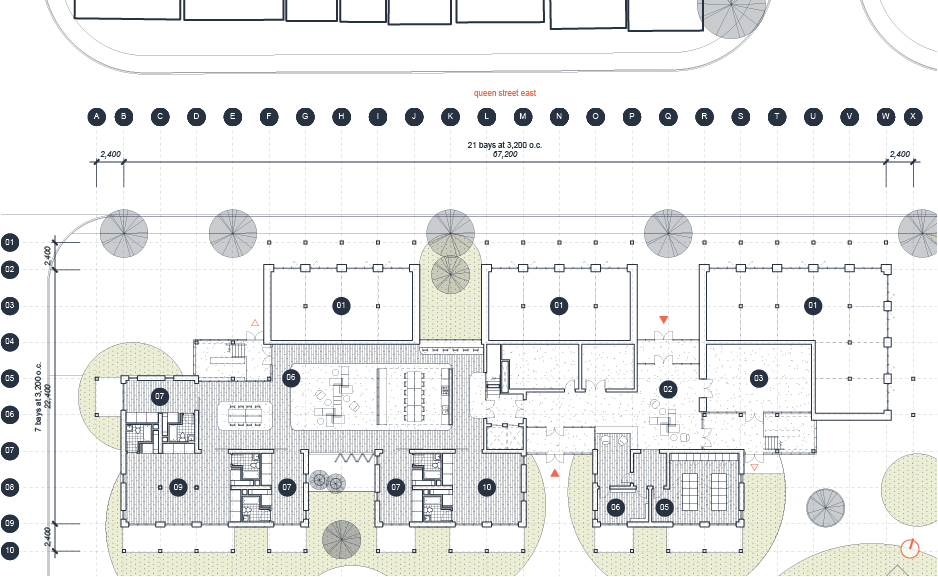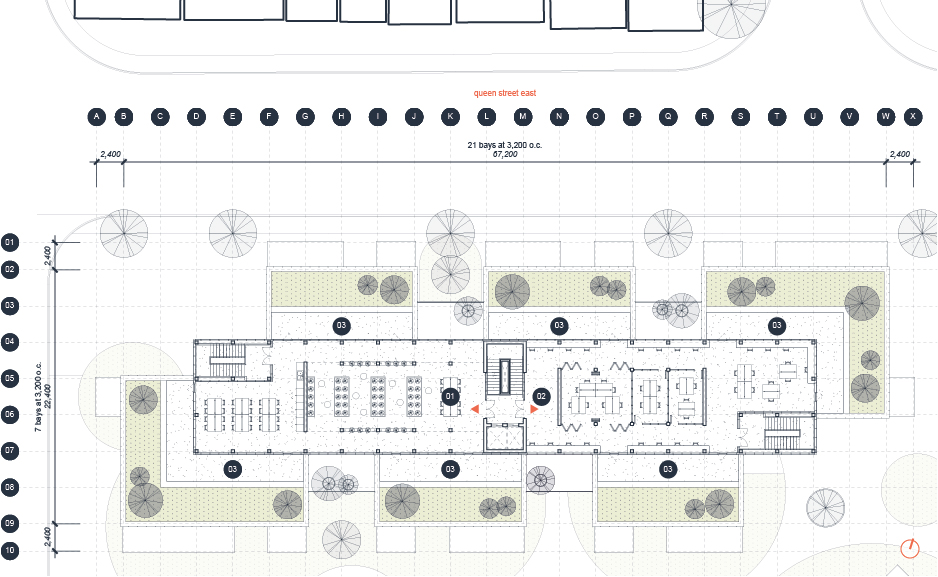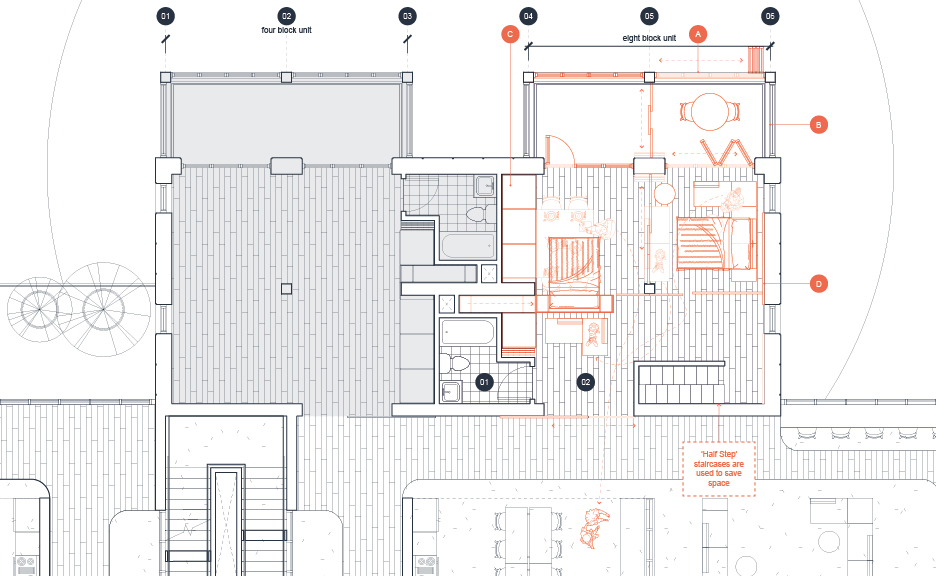MASTER OF ARCHITECTURE
Jeannette Wehbeh—RAIC Honour Roll
![]()
Jeannette Wehbeh—RAIC Honour Roll

About the Award
For those students who have achieved high academic standing in the top 10% of their graduating class.
The walls talk back.
‘Like talking to a brick wall’ has long worked as a metaphor
for one-way communication, describing a situation in which
one person talked while the other did not listen. It likened the futility of talking to someone who refuses to listen to the immovability of a brick wall, and as such, it reflects contemporary views related to the walls or boundaries that confine inhabitants within architecture.
In response to this metaphor, this thesis explored how architecture could be reimagined from an immovable wall to a continuous dialogue between buildings and their inhabitants, specifically focusing on the typology of mid-rise multi-family housing within the City of Toronto.
Thesis work explored how inhabitants and their use of space within the home is in constant flux, changing temporally in relation to dynamic factors such as an individual’s age, a household’s size, daily needs and activities, the time of day, and weather conditions. Contemporary multi-family housing projects in Toronto are not designed to support these changes as units are often too small and are segmented into rooms with fixed uses, contributing to inhabitant dissatisfaction. In this thesis, the question of adaptability was explored to promote wellbeing and improved space usage. Research began with literature reviews and case study analyses which established design parameters specific to adaptability in multi-family housing. A project sited within Toronto was developed as a critique of contemporary design methods.
As a result, the final thesis project reimagined the role of walls as a way of initiating continuous dialogue between inhabitants and architecture in the design of spaces that satisfy each individual’s needs over time through a system or architectural elements that are designed for adaptability. Through the inhabitant’s actions of pushing and pulling on these elements, the walls are now able to talk back and respond to their unique needs at any given time.
For those students who have achieved high academic standing in the top 10% of their graduating class.
The walls talk back.
‘Like talking to a brick wall’ has long worked as a metaphor
for one-way communication, describing a situation in which
one person talked while the other did not listen. It likened the futility of talking to someone who refuses to listen to the immovability of a brick wall, and as such, it reflects contemporary views related to the walls or boundaries that confine inhabitants within architecture.
In response to this metaphor, this thesis explored how architecture could be reimagined from an immovable wall to a continuous dialogue between buildings and their inhabitants, specifically focusing on the typology of mid-rise multi-family housing within the City of Toronto.
Thesis work explored how inhabitants and their use of space within the home is in constant flux, changing temporally in relation to dynamic factors such as an individual’s age, a household’s size, daily needs and activities, the time of day, and weather conditions. Contemporary multi-family housing projects in Toronto are not designed to support these changes as units are often too small and are segmented into rooms with fixed uses, contributing to inhabitant dissatisfaction. In this thesis, the question of adaptability was explored to promote wellbeing and improved space usage. Research began with literature reviews and case study analyses which established design parameters specific to adaptability in multi-family housing. A project sited within Toronto was developed as a critique of contemporary design methods.
As a result, the final thesis project reimagined the role of walls as a way of initiating continuous dialogue between inhabitants and architecture in the design of spaces that satisfy each individual’s needs over time through a system or architectural elements that are designed for adaptability. Through the inhabitant’s actions of pushing and pulling on these elements, the walls are now able to talk back and respond to their unique needs at any given time.



